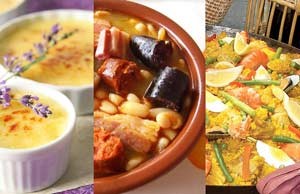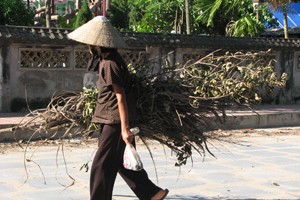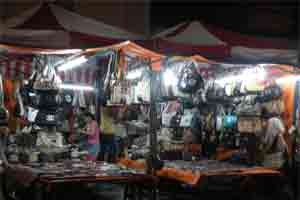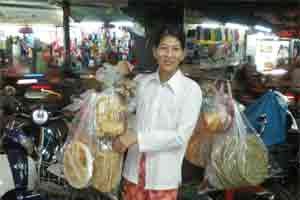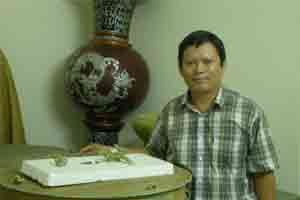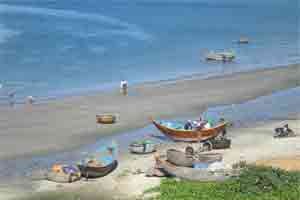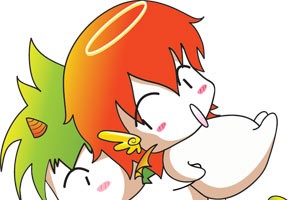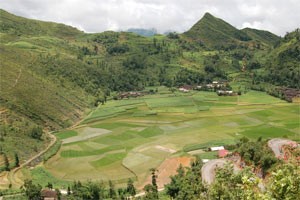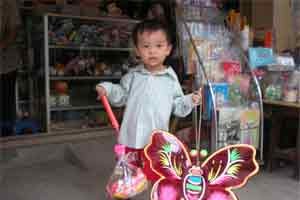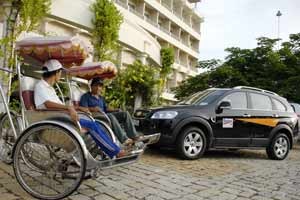The image is iconic and has been reproduced endlessly – a little boy sitting on a water buffalo playing the flute. This gentle beast is mostly used to till paddy fields, and spends the rest of its time contentedly wallowing in muddy waters.
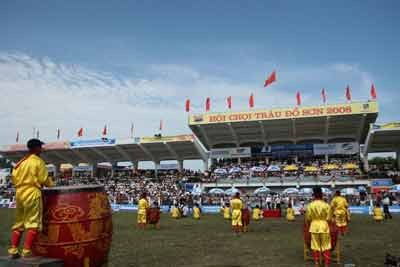
But on the ninth day of the eighth lunar month every year, thousands of people across the country flock to the Do Son village in northern Hai Phong province to see the peaceable water buffalo transformed into a fierce, fearsome fighter.
The buffalo-fights that draw such huge crowds have been a long-standing tradition for the fishing folk of Do Son.
Buffalo fighting is a traditional Vietnamese festival attached to a Water God worshipping ceremony and the Hien Sinh custom that showcases the martial spirit of the people.
The festival begins with a colorful procession led by an octet. The chosen buffalos follow, covered with red cloth and red bands around their horns. They are taken to the fighting ring by 24 young men from two teams, also dressed in red. The young men dance and wave flags as the two teams take their positions in the arena.
A pair of buffalos is then led into the fighting circle, whereupon they lock horns as the audience beats drums and gongs, and emit full-throated yells to spur the contestants on.
The fighting buffaloes are typically around four years old, and are carefully selected – good appearance, a wide chest, long neck, strong rump, and bow shaped horns, well fed, and trained – are all must-have attributes.
This year, the qualifying rounds on July 10 and 16 had 32 buffalos taking part, and 16 winners entered the next round. The final round took place on September 8 with the 16 buffaloes engaging in 15 fights before the winner emerged.
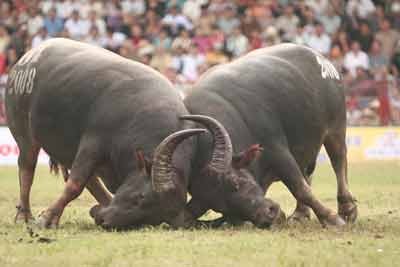
For the fisherfolk of Do Son, the spectacle of two buffalos engaged in fierce combat symbolizes the valiant spirit that they need to confront the gales and frenzy of the high seas.
To prepare for the unique event, the town’s residents make their choice buffalo purchases at least eight months in advance. They take their time to find the right one, going to the highlands and even as far as Laos and Myanmar in search of strong, quick, dogged beasts aged between four and five years.
Last year, the winning buffalo was bought from Myanmar, famous for producing strong beasts. This year, of 32 buffalos in the qualifying rounds, 28 come from Laos and 2 from Myanmar.
After the creatures are selected and bought, the training begins. The training is crucial to converting a peace-loving creature into a fearless combatant. During this time, the animals are kept in separate pens that only their caretakers and trainers can enter. Experienced trainers work day and night to get the buffaloes to try and deliver potent death blows to their opponents.
Three of the most prominent personalities involved with the buffalo fights in Do Son are Dinh Xuan Hieu, Hoang Dinh Khac and Dinh Dac Doan. They spend a lot of money to get buffaloes and trainers, and spare no effort to ensure that there is a lot excitement in the air for the festival.
After the fighting is done and the victor declared, all the contestants are slaughtered and cooked for the spectators to feast on. Eating buffalo meat is believed to bring luck, and that of warrior buffalos, more so. High prices, therefore, are not a deterrent as the spectators pay tribute to the beasts that first have to enthrall them with their fighting prowess, and then make the ultimate sacrifice.


